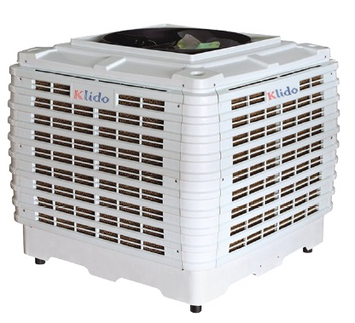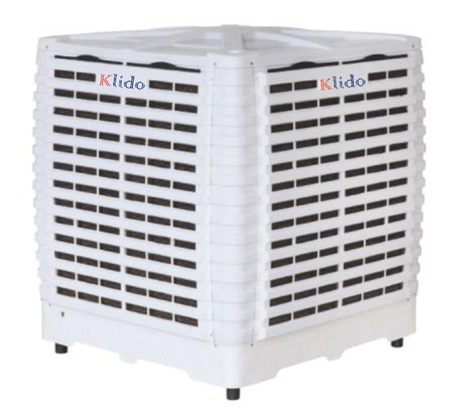EVAPORATIVE COOLERS

How Aircoolers work?
When water is evaporated, energy is lost from the air, reducing the temperature. Two temperatures are important when dealing with evaporative cooling systems.
Dry Bulb Temperature
- This is the temperature that we usually think of as air temperature, measured by a regular thermometer exposed to the air stream.
Wet Bulb Temperature
- This is the lowest temperature that can be reached by the evaporation of water only.
When considering water evaporating into air, the wet-bulb temperature, as compared to the air’s dry-bulb temperature, is a measure of the potential for evaporative cooling. The dry and wet bulb temperature can be used to calculate the relative humidity.
Evaporation will take place when the humidity is below 100% and the air begins to absorb water. Any given volume of air can hold a certain amount of water vapour and the degree of absorption will depend on the amount it is already holding.
The term humidity describes how much water is already in the air; relative to the amount it is capable of holding. Air is saturated when it cannot hold any more water. Imagine it as a sponge, if the sponge held half as much water as it was capable of holding, it would be 50% saturated. In the case of air, we would describe the Relative Humidity as being 50%.
Energy is required to change water from liquid to vapour. This energy is obtained in an adiabatic process from the air itself. Air entering an evaporative air cooler gives up heat energy to evaporate water. During this process, the dry bulb temperature of the air passing through the cooler is lowered.

KY18
10500 CFM / 18000CMH
12 speed control
Top / down discharge
1.08 x 1.08 x 0.95 m (WxDxH)
1.3kW/h single phase
Axial
Wired LCD panel & wireless remote
centrifugal pump and drain kit
KY30
17500 CFM / 30000CMH
Single speed (high)
Top / down discharge
1.3 x 1.3 x 1 m (WxDxH)
3 kW/h 3phase
Axial
Wall switch controller
centrifugal pump and drain kit
Evaporative air conditioning uses evaporation to cool the air. In an evaporative cooler, such as Klido, a pump circulates water from the reservoir on to a cooling pad, which in turn becomes very wet. A fan draws air from outside the unit through the moistened pad. As it passes through the pad the air is cooled by evaporation. The key to effective evaporative cooling is ensuring that each of the cooling pads are completely saturated at all times during operation and that the systems fan & motor are sized and designed to deliver the appropriate airflow for the home.

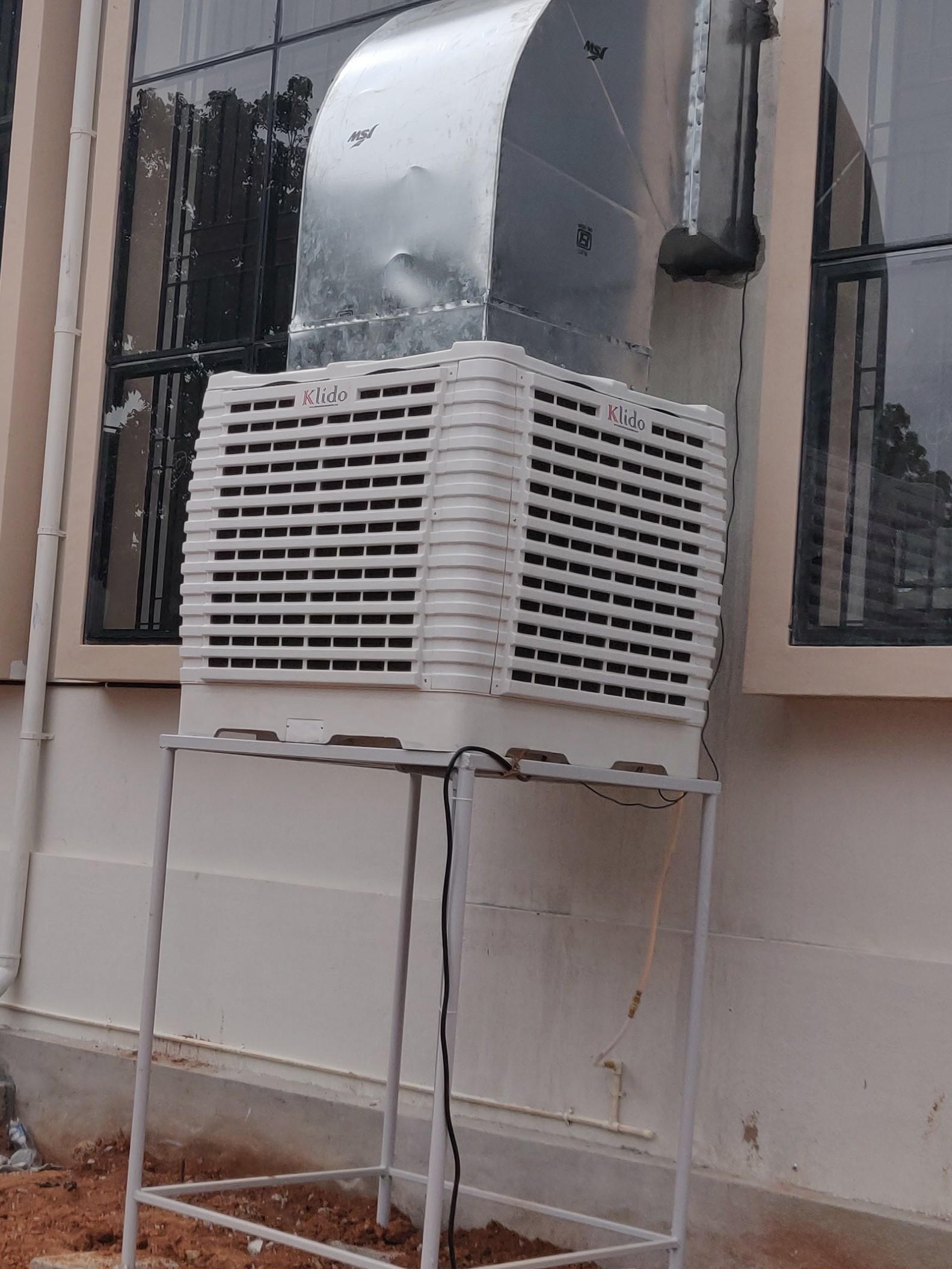




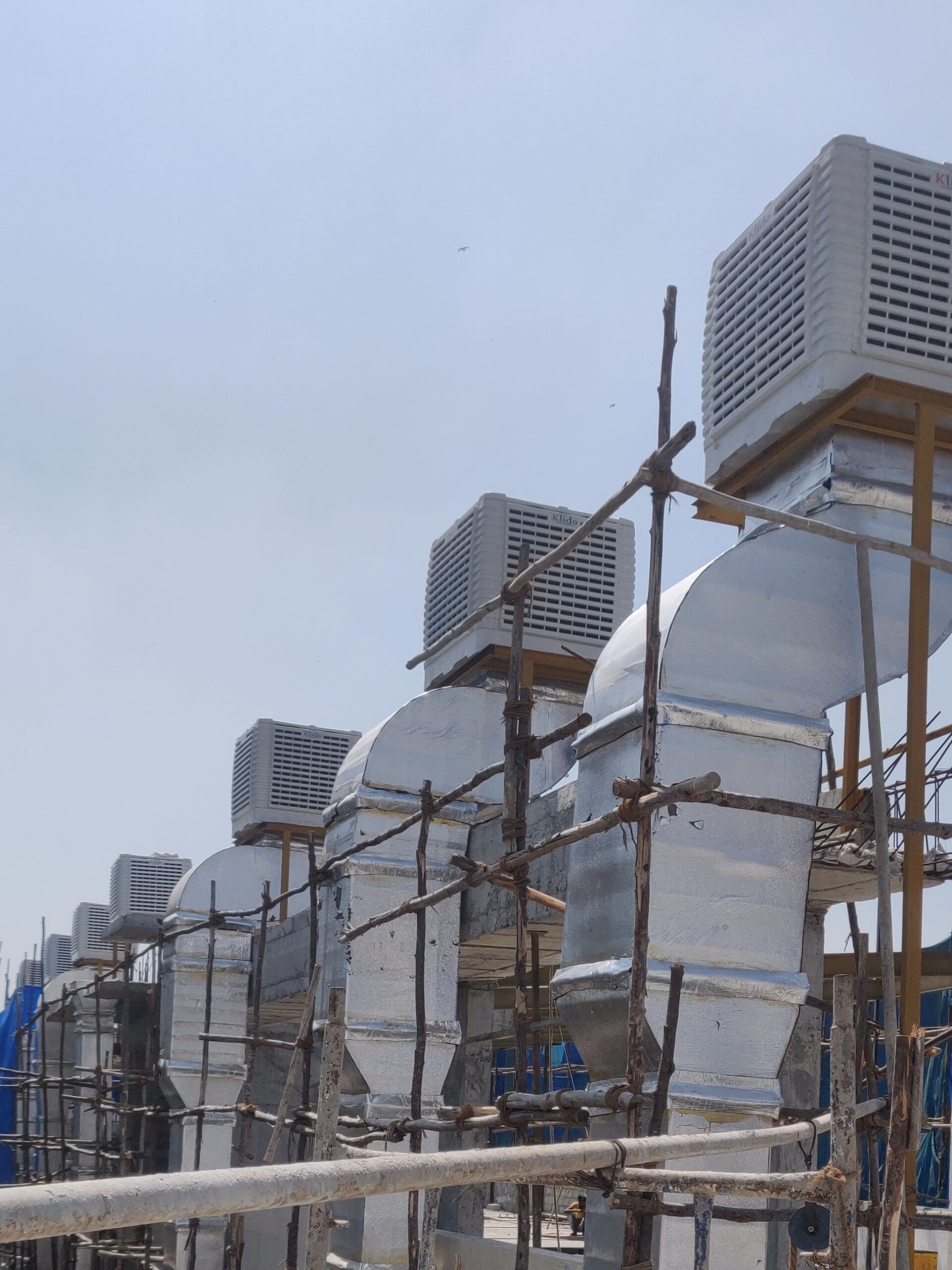


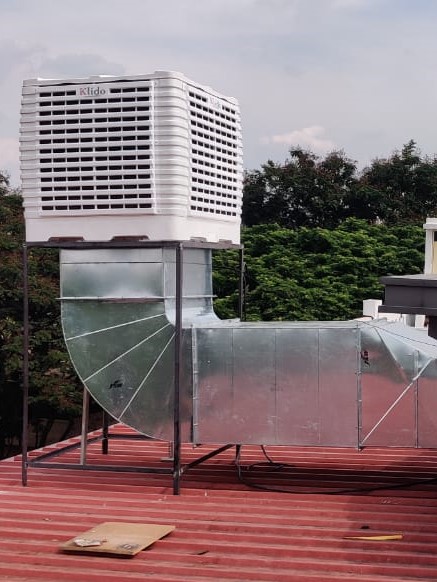
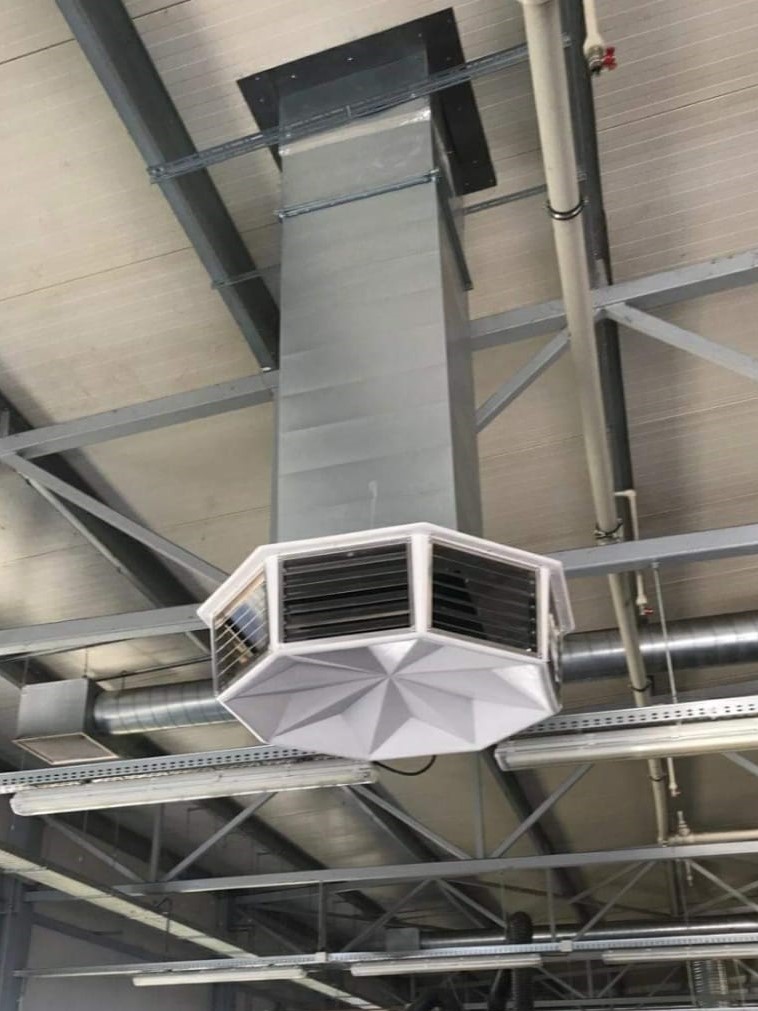
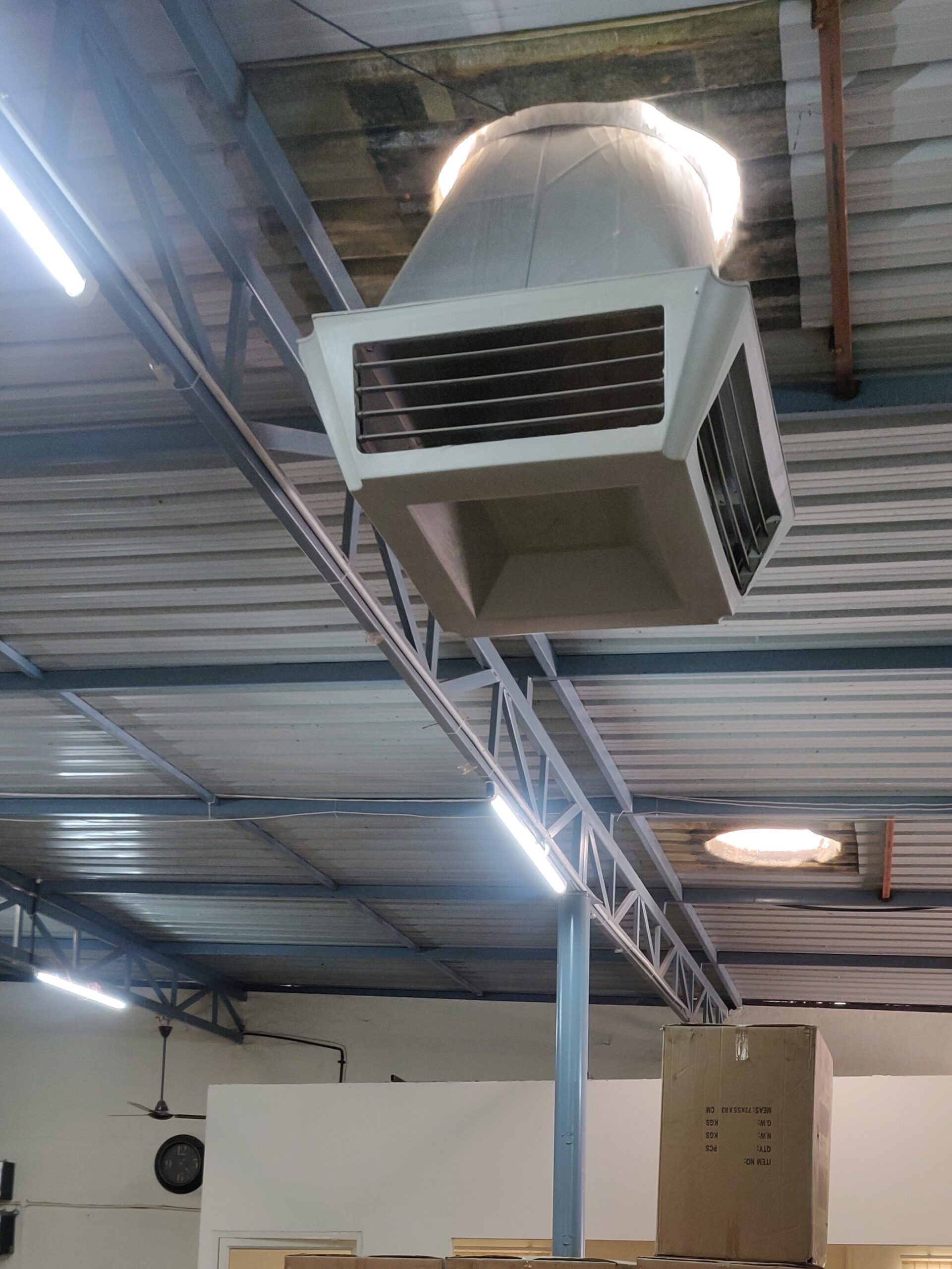
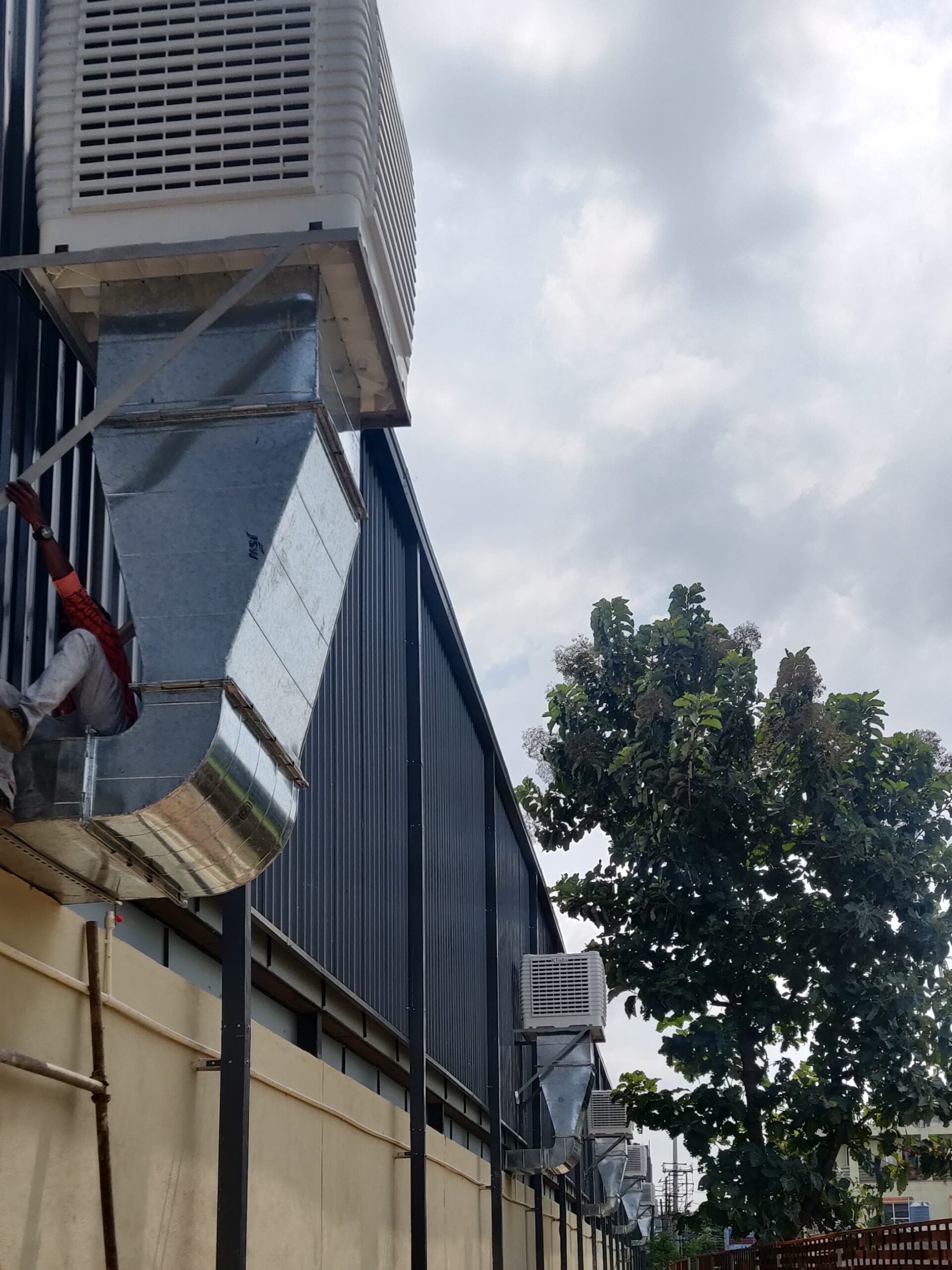
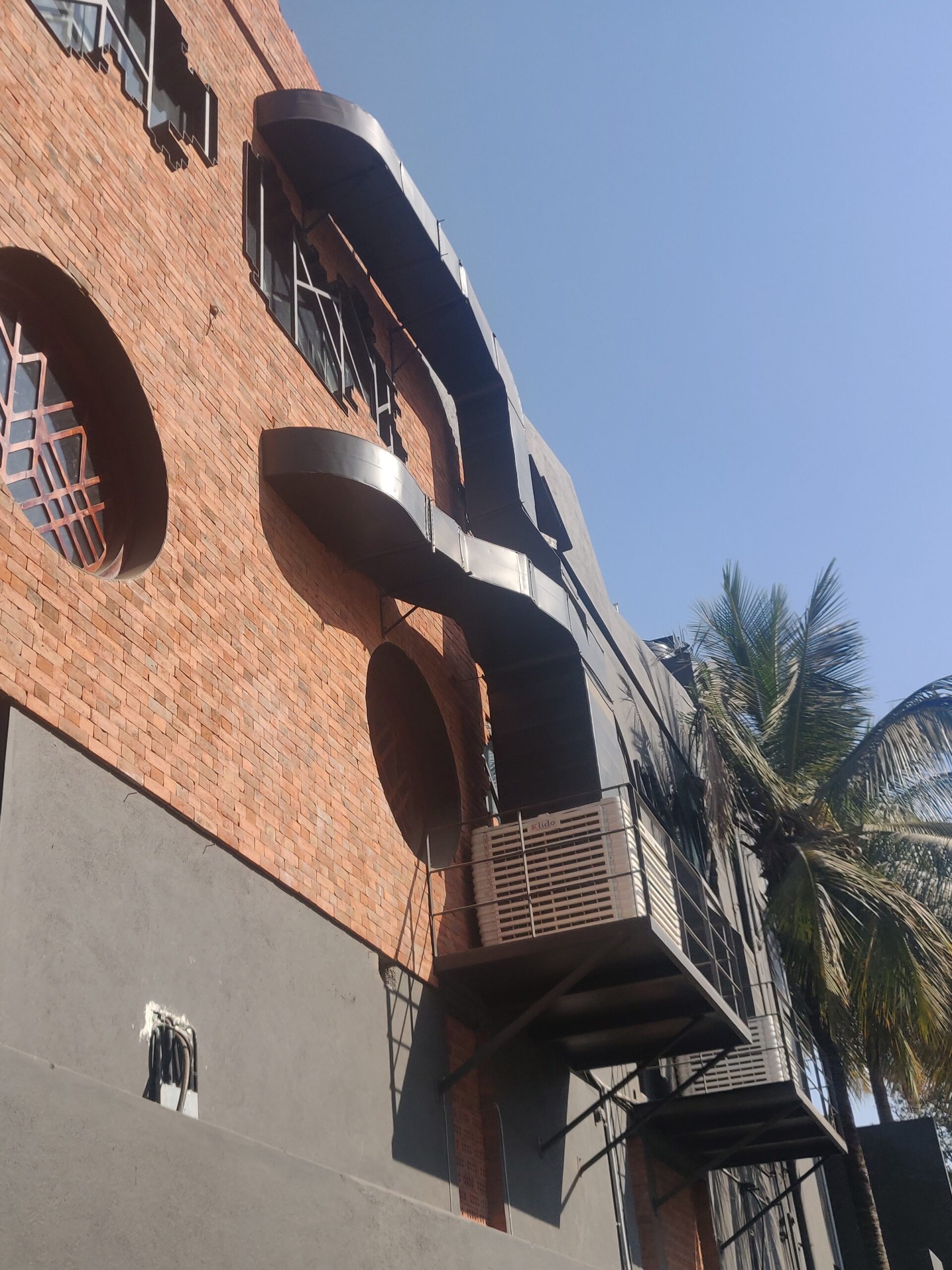

Benefits of Aircooling
- Can be used in open Areas especially where Air-conditioners cannot be installed
- Very efficiently cools open and semi open areas
- 100% fresh Air
- Keeps the IAQ of the facility in top condition
- Puts the facility under positive pressure, hence the infiltration of hot and dusty air is eliminated.
- Extremely low recurring cost in terms of power consumption and maintenance
- Guaranteed zero water carry over in the Airstream
- Easy to maintain
- A Green product. No CFCs, no emissions, very low carbon footprints, low power consuming, long service life makes it a very Environment Friendly proposition.
Application of Aircoolers
- Common areas in large homes
- Factories, shop floors and warehouses
- Automative Maintenance workshops
- Exhibitions
- Open Cafes
- Open Restaurants
- Churches/Mosques/Temples
- Commercial kitchens
- Shopping plazas
- Marriage halls
- Schools and colleges
- Auditoriums
- Any area where cooling is required, but an Air-conditioner cannot be installed

